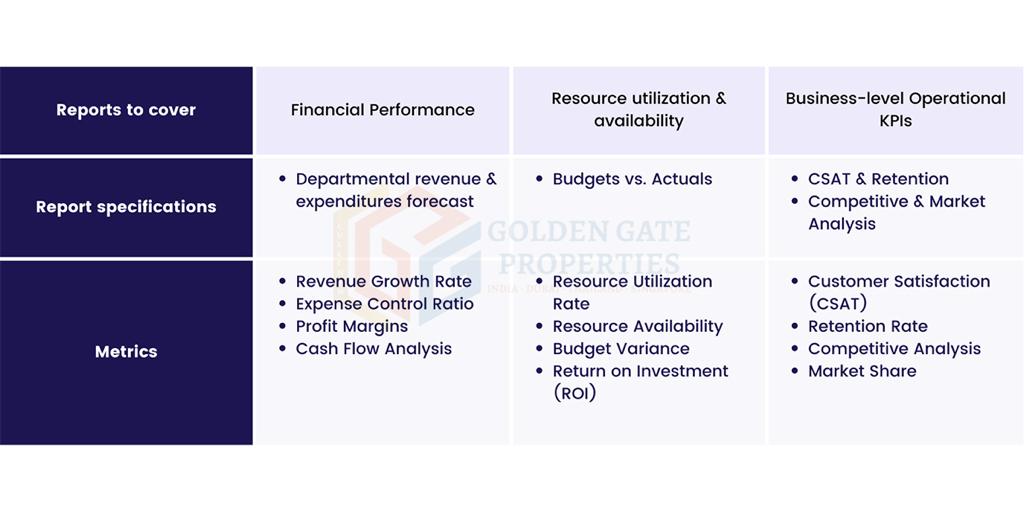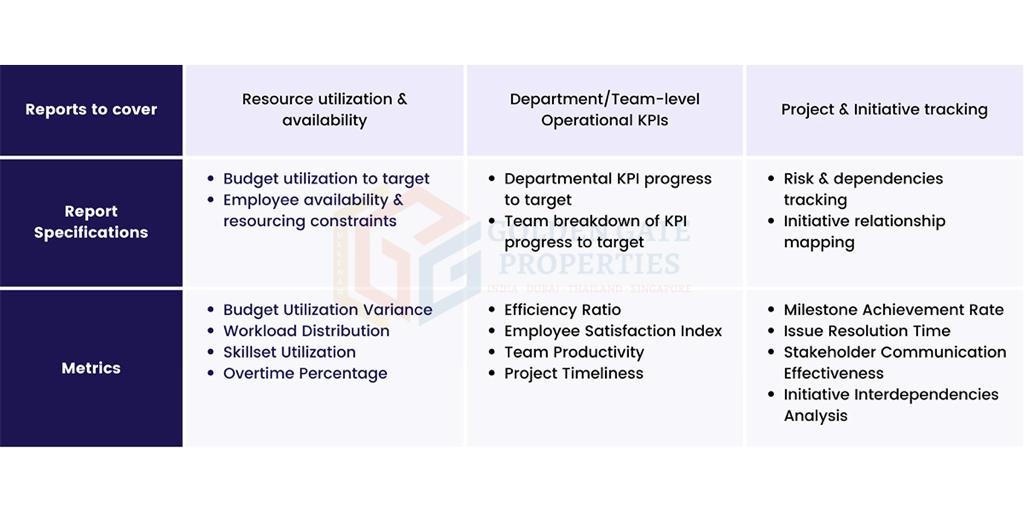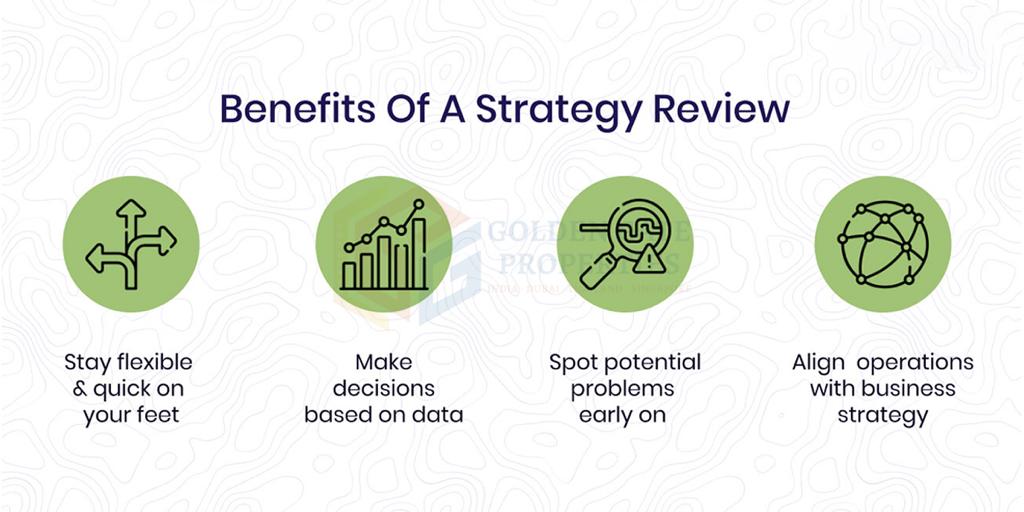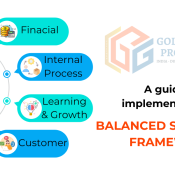
Reviewing Strategy: How To Do It & What To Include
To meet corporate goals before the year or quarter finishes, you must do successful strategy reviews.
These reviews are a crucial aspect of strategy governance because they provide the leadership team with a comprehensive perspective of the organization’s performance as well as the data they need to make confident decisions.
Effective strategy reviews also assist operational executives and their teams in staying focused on activities that promote corporate objectives rather than becoming bogged down in everyday duties.
With this in mind, here’s a full guide on conducting several forms of plan reviews.
What is a Strategy Review?
A strategy review is a systematic study and assessment of an organization’s plans, efforts, and objectives. It is a regular strategy meeting attended by key stakeholders to assess the development of the company’s strategic direction and ensure that everyone is still on track with the business roadmap.
You must respond to the following important questions when doing a strategy review.
How are the strategic plan’s actions performing?
Are we receiving the intended results?
Do we need to rethink the approach because of certain unexpected issues?
Are there any elements that compel us to revise the strategy plan?
A strategic review ensures that your short-term initiatives are consistent with the organisation’s long-term strategic objectives and priorities. It also guarantees you remain attentive to changes in the external market and that the current strategy is still the best approach to get your desired results.
Recommended Read – A Business Level Strategy: What Is It? The Best Way To Do It + Examples
How often should a strategy be reviewed?
Companies often review their strategic plans once a year, or more frequently as needed. Annual or irregular evaluations put your organisation in danger of missing opportunities, exacerbating preventable problems, and needing to be more active in adjusting to market changes.
GGP’s strategy execution experts advocate a more dynamic approach.
They urge organisations to practise ongoing strategic governance by conducting methodical, bite-sized evaluations.
A more consistent strategy allows you to notice and respond to changes rapidly and reallocate and reprioritize resources based on your organization’s needs.
They recommend doing strategy evaluations on two levels:
Dynamic performance and strategy evaluation.
This covers company executives and department heads. It is a detailed high-level review of current projects. Doing so quarterly allows you to make strategic modifications fast and stay sensitive to changing market circumstances.
Operational health check.
This one occurs more frequently and includes department directors, team leaders, and programme managers. This monthly evaluation focuses on day-to-day operations and helps identify concerns promptly. It also assures strategy alignment at the lowest levels of the organisation.
How to Conduct a Strategy Review?
A planned approach is required to conduct a successful strategy review meeting. Here’s a step-by-step instructions:
Step 1: Prepare the data ahead of the strategy review meeting.
One of the most important stages before the plan review meeting is to make sure you have all of the appropriate data on hand. Using data-driven reports will allow you and your management team to correctly analyse business performance and fine-tune your short-term strategies.
📌 For a quarterly dynamic performance evaluation, collect the following reports:

Financial performance report including department income and spending forecast.
Resource utilisation and availability report, including budget vs. actual performance.
Business-level operational key performance indicators (KPIs) include competition and market analysis, as well as customer satisfaction and retention.
📌 If you’re running a monthly operational health check, you need the following reports:

Report on resource utilisation and availability, including budget utilisation to target, employee availability, and resource restrictions.
Department and team-level operational KPIs, stating progress to the objective.
Project and initiative tracking report, including risk and dependency monitoring and initiative-relationship mapping.
These reports must be produced ahead of time by the appropriate business executives, department heads, team leads, and project managers who will be attending the strategy meeting.
Step 2: Review the objectives and prior performance.
This is the stage in which you gather everyone in a real or virtual room. Start by summarising the goal of the strategy meeting and ensuring that everyone is on the same page from the start. Allow attendees adequate time to present the reports they created, including their KPIs and other successes since the previous session.
Review major milestones and thoroughly evaluate everyone’s performance. This in-depth analysis of past performance will assist you in identifying patterns and trends that will assist you in meeting future objectives.
Step 3: Open the floor for a strategic conversation.
After the findings are given, invite guests to express their views and comments.
Investigate the “why” underlying the stated facts. Why did certain activities produce this kind of results while others did not? Determine whether any lost chances or excellent practices led to success.
This is also an excellent chance for executives to learn more about what is going on in other departments and business units. You or a designated facilitator should ensure that the conversation is balanced and that everyone has an opportunity to speak.
Step 4: Discuss the new strategy and modifications.
Next, establish the principles for determining which new tactics to adopt, concentrating on what will assist your organisation meet its goals.
Consider the advantages and disadvantages of each concept. Facilitate systematic conversations and debates to weigh the benefits of each plan, ensuring that every detail is properly investigated. Use decision-making methods such as SWOT analysis to simplify complex strategic decisions.
Depending on the organization’s culture, final decisions can be made via consensus or vote.
Step 5: Assign new initiatives and duties.
Assign ownership and timelines for each new plan or strategic aim. This will help you establish responsibility and minimise uncertainty about who is responsible for what. Deadlines can instil a sense of urgency, preventing procrastination.
Before you complete the current review process, define specific responsibilities to ensure that staff remain committed to the plan and that the next review session is more efficient.
💡Some firms appoint owners during the review meeting, while others do it later (see step 6 below). Choose the way that works best for your organisation, but remember that designating owners is essential for accountability.
Step 6: Keep everyone in the loop after the meeting
When implementing new strategies and modifications following a review, clarity is essential to maintaining momentum. Department heads and team leaders must successfully translate meeting conclusions into concrete departmental strategies and share them with their personnel.
For example, if a new sales strategy is implemented, the sales manager should define the action plan, allocate duties to team members, and give deadlines during a kick-off meeting.
Follow up with weekly check-ins for progress updates and room for team members to discuss insights or challenges they are experiencing.
What Are the Benefits of a Strategy Review?

Breaking away from traditional practice and introducing a more regular strategy review has various benefits:
Stay flexible and fast on your feet.
By monitoring how your plan is doing, you may identify new market trends, what your consumers desire, and what your rivals are up to.
This means you can swiftly adjust your plans and reallocate resources to seize fresh opportunities or avoid future setbacks. Being agile in business nowadays involves staying ahead of the curve and outpacing your competitors.
Make judgements based on data.
When reviewing your plan, you are directed by hard data, which includes KPIs and other business measurements. This data-centric strategy provides you with a clear lens through which to evaluate performance and make crucial decisions that move your organisation forward. You make judgements based on actual data, not guesswork or tales.
This knowledge enables you to allocate resources where they are most successful and double down on initiatives that genuinely deliver. Regular strategy evaluations will also result in stronger yearly plans based on facts.
Identify possible problems early on.
By monitoring performance data and how things are going, you may identify little difficulties before they become major headaches. NAMEMitigating risks proactively allows you to avoid severe problems that might harm your company’s good name.
Keep the company’s operations in line with its business plan.
Regular strategic reviews allow teams and departments across the organisation to coordinate their efforts to align with the company’s major objectives. This coordination helps to break down silos between different business units and enhances cross-functional collaboration, which is critical for overall performance.
Connect with GGP Experts To Hit Your Business Targets 🚀
In strategy meetings, it’s not just about reviewing numbers; it’s about understanding the “why” behind the data, which is essential for informed decision-making. With GGP’s Expert Team, you can go beyond the numbers and get the full strategic context every time you review the progress of your strategy.



